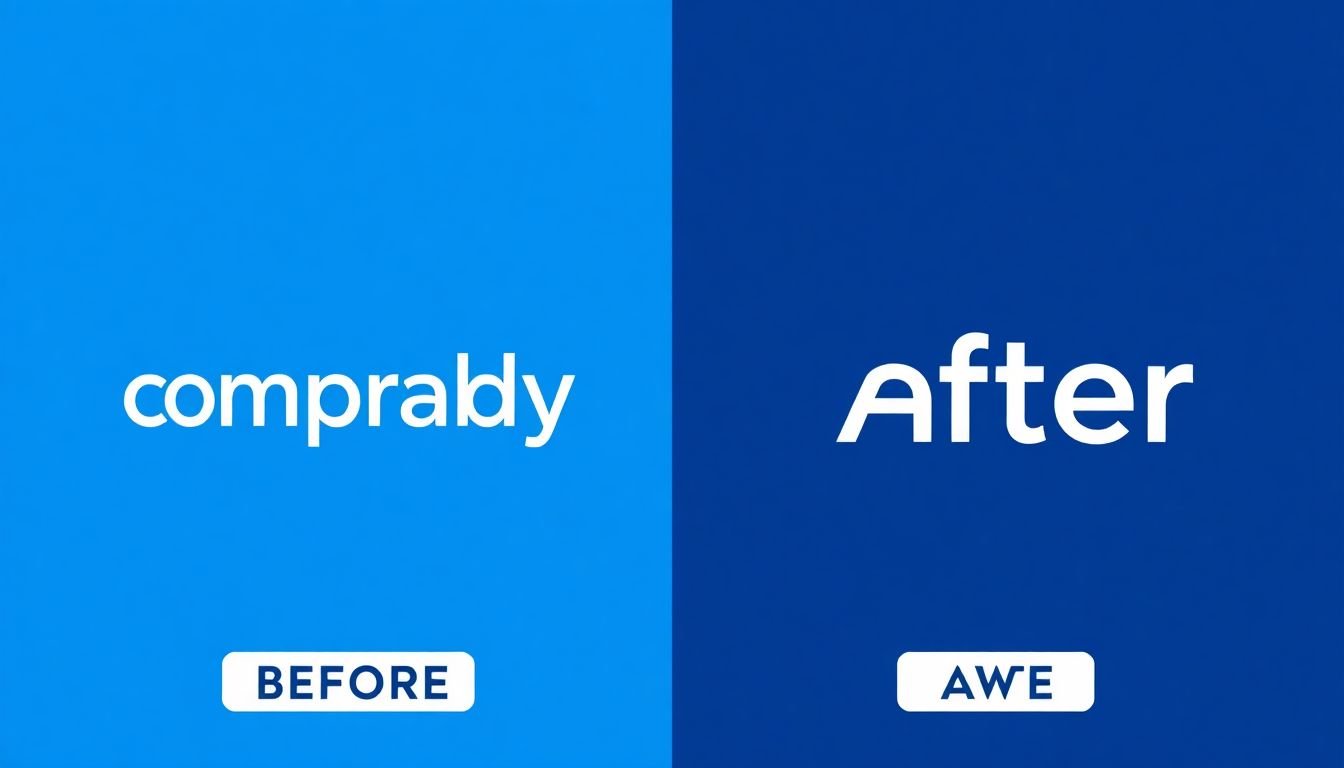
Table of Contents
In the ever-evolving landscape of business, maintaining a relevant and engaging brand image is not a set-it-and-forget-it task. It’s a dynamic process that requires periodic tune-ups, much like a car’s annual service. This is where brand refreshes and corporate rebranding come into play, marking a brand’s evolution and ensuring it remains a beacon in the market. But how do you know when it’s time to give your brand a facelift? Today, we’re diving into the fascinating world of brand makeovers, exploring the signs that indicate it’s time for a change, and guiding you through the process of a successful brand refresh. So, let’s buckle up and embark on this transformative journey together!
Did you know that some of the world’s most iconic brands have undergone multiple rebranding exercises? Take Coca-Cola, for instance. Since its inception in 1886, the brand has evolved through numerous design iterations, each time refining its image to stay relevant and appealing to its ever-changing audience. This begs the question: When was the last time you took a step back and evaluated your brand’s image? Is it still resonating with your target audience, or has it become a relic of a bygone era?
According to a study by Interbrand, the world’s top 100 brands have increased in value by 4% annually over the past decade. However, this growth isn’t linear; it’s punctuated by strategic brand refreshes that help these powerhouses maintain their relevance and appeal. So, the question remains: Are you ready to join the ranks of these successful brands and give your corporate identity a makeover?
In this article, we promise to equip you with the knowledge and tools necessary to identify when it’s time for a brand refresh. We’ll delve into eight clear signs that indicate your brand is due for an evolution, and we’ll provide practical insights into how to navigate the process of rebranding. By the end of this piece, you’ll not only agree that a brand refresh is a critical aspect of business growth but also be well on your way to planning your brand’s next chapter. So, let’s roll up our sleeves and get started!
Revitalize Your Brand with a Strategic Rebranding Approach
In today’s dynamic business landscape, a brand is not a static entity but a living, breathing force that evolves with time. However, even the most robust brands can lose their luster over time, becoming stale or irrelevant in the face of changing market trends and consumer behaviors. This is where a strategic rebranding approach comes into play, offering a breath of fresh air and a chance to revitalize your brand’s identity. Imagine your brand as a beautiful, ancient tree. Over time, its bark may peel, its leaves may fall, and its branches may grow in unexpected directions. A strategic rebranding is like a careful pruning and nurturing process, stripping away the deadwood, encouraging new growth, and guiding the tree back towards its intended shape. It’s not about chopping down the tree and starting anew, but about honoring its history while preparing it for a vibrant future. This process involves a deep dive into your brand’s DNA, understanding its core values, mission, and unique selling points. It’s about identifying what makes your brand special and amplifying that, while also addressing any aspects that may be holding it back. A strategic rebranding approach is not just about a new logo or color scheme, but about crafting a compelling narrative that resonates with your audience, both old and new. It’s about redefining your brand’s purpose, refining its visual identity, and realigning its messaging to better connect with your target market. Think of it as a brand makeover, but with a strategic, long-term focus. It’s about more than just looking good; it’s about feeling good, doing good, and being good
- for your brand, your customers, and your business as a whole. So, are you ready to revitalize your brand, to give it a new lease on life, to help it grow and thrive in a changing world? The first step is simple: let’s start a conversation about your brand’s future.
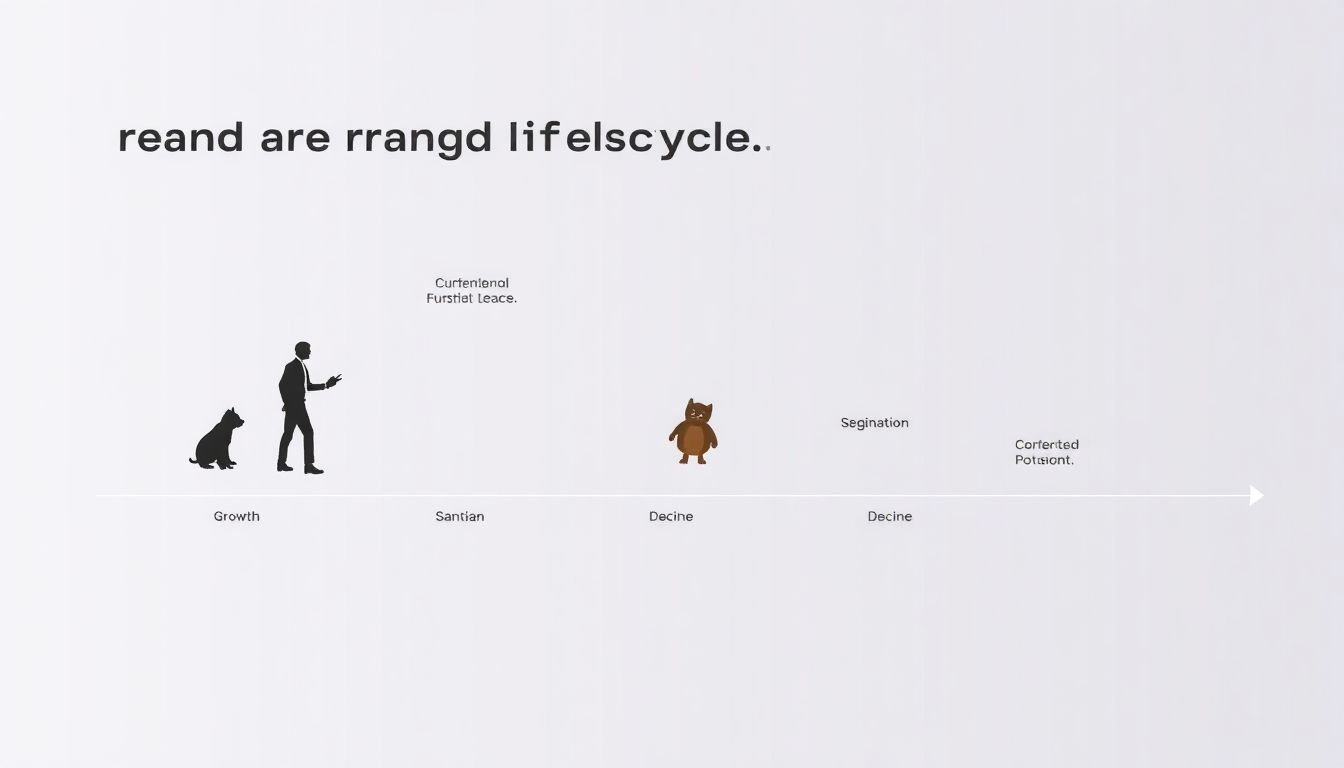
Understanding Brand Evolution
Brand evolution, much like the growth and transformation of a living organism, is a natural and continuous process that brands undergo to adapt, grow, and remain relevant in an ever-changing market landscape. It’s not just about keeping up with trends, but also about staying true to the brand’s core identity while allowing it to evolve and mature over time.
The importance of brand evolution cannot be overstated. In today’s dynamic business environment, consumer preferences, market trends, and competitive landscapes are in a state of constant flux. A brand that fails to evolve risks becoming stagnant, losing its appeal, and ultimately, its market share. Evolution allows brands to stay fresh, adapt to new consumer needs, and maintain their competitive edge.
Brand evolution differs significantly from a complete rebrand. While both involve changes to a brand’s identity, a rebrand is typically a more drastic measure, often undertaken when a brand has lost its way or is facing significant challenges. It often involves a complete overhaul of the brand’s visual identity, messaging, and sometimes, even its name. On the other hand, brand evolution is a more gradual process, focusing on incremental changes that build upon the brand’s existing equity and history.
The natural lifecycle of brands can be likened to a journey through four distinct stages: birth, growth, maturity, and renewal. In the birth stage, brands are new, exciting, and often full of promise. During the growth stage, they begin to establish their identity and gain traction in the market. Maturity brings stability and success, but also the risk of stagnation. Finally, renewal is the stage where brands must adapt, evolve, or risk decline. Change, in this context, is not just inevitable; it’s necessary for survival.
Understanding and embracing this natural lifecycle is key to successful brand evolution. It’s about knowing when to hold on to what makes your brand unique and when to let go and adapt. It’s about understanding that change is not a sign of failure, but a necessary part of growth. After all, as the saying goes, ‘The only thing constant in life is change.’ And for brands, that change is not just constant, but also crucial for their continued success.

8 Red Flags Indicating a Brand Refresh is Needed
A brand refresh can be a powerful tool to keep your business relevant and engaging in an ever-evolving market. But how do you know when it’s time for a change? Here are eight red flags that suggest a brand refresh is necessary.
1. Your Brand Looks Outdated:
In today’s digital age, visual appeal is crucial. If your logo, color scheme, or typography look like they’re stuck in the past, it might be time for an update. For instance, Gap’s 2010 logo redesign was a stark departure from their classic blue box, causing a public backlash that led to its swift removal. This serves as a reminder that while change can be good, it should be done thoughtfully.
2. Your Brand Message is Confusing:
If your brand’s mission, values, or unique selling points aren’t clear, it’s time to refine your messaging. Airbnb’s 2014 rebranding is a great example. They simplified their logo and messaging, making it easier for customers to understand what they offered.
3. Your Brand isn’t Consistent:
Consistency is key in branding. If your brand looks and feels different across different platforms, it’s time for a refresh. Starbucks’ 2011 rebranding ensured their logo, colors, and messaging were consistent across all touchpoints, from their cups to their app.
4. Your Brand isn’t Connecting with Your Audience:
If your brand isn’t resonating with your target audience, it might be time for a change. Old Spice’s 2010 rebranding, with its humorous and engaging campaigns, successfully appealed to a younger demographic.
5. Your Brand isn’t Reflecting Your Business:
If your business has evolved, but your brand hasn’t, it’s time for an update. Apple’s transformation from a computer company to a tech giant was reflected in their 2002 rebranding, which introduced the iconic iMac G4.
6. Your Brand isn’t Standing Out:
In a crowded market, it’s important to stand out. Dunkin’ Donuts’ 2019 rebranding, which dropped ‘Donuts’ from their name and updated their logo, helped them differentiate themselves from competitors.
7. Your Brand isn’t Future-Proof:
A good brand should be timeless, but also adaptable. If your brand isn’t ready for the future, it’s time for a refresh. Netflix’s 2015 rebranding, which introduced a more dynamic and flexible logo, reflects their evolution from a DVD rental service to a streaming giant.
8. Your Brand isn’t Supporting Your Business Goals:
- If your brand isn’t helping you achieve your business objectives, it’s time for a change. A well-designed brand should support your business strategy, whether that’s expanding into new markets, launching new products, or improving customer satisfaction.
Each of these signs indicates a need for a brand refresh, but it’s important to remember that a rebrand isn’t a one-size-fits-all solution. It should be tailored to your specific business needs and carried out with careful consideration for your audience and market. After all, a brand is more than just a logo
- it’s the sum of all the experiences and interactions people have with your business.
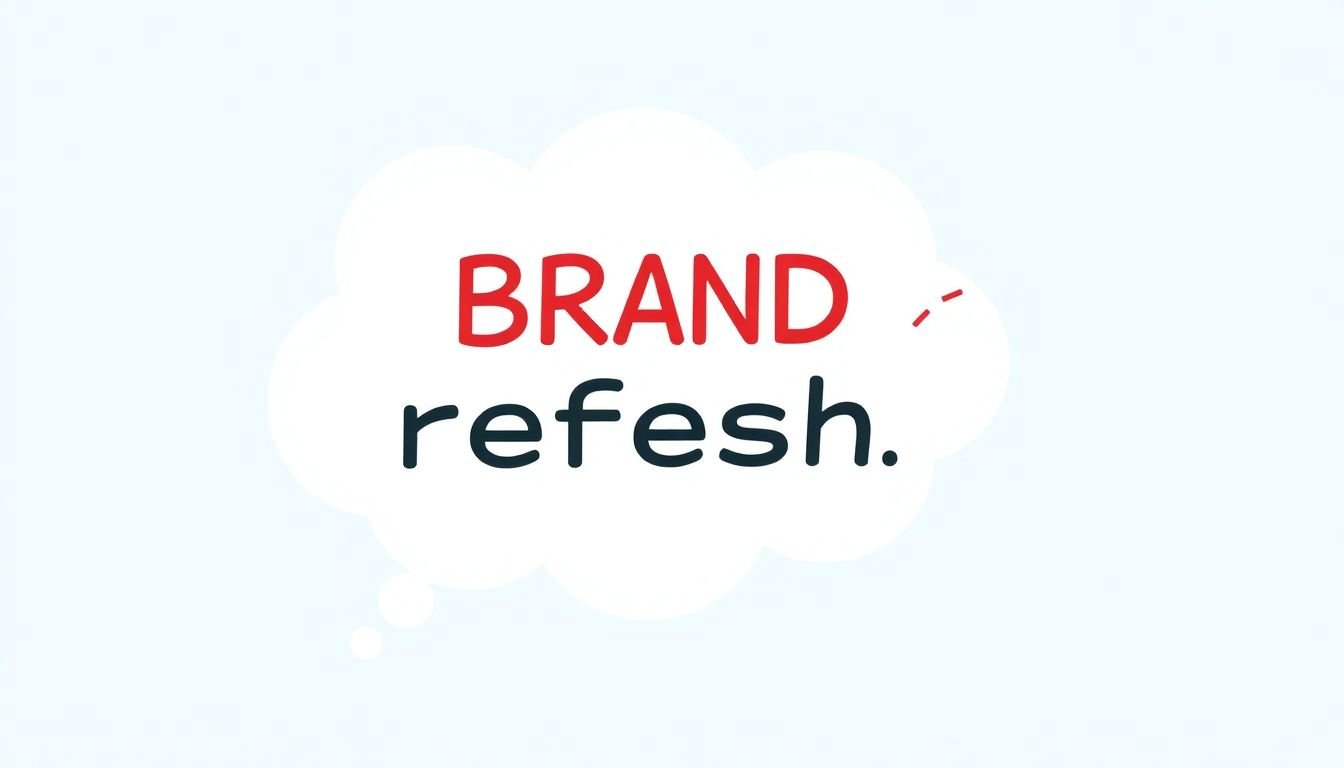
The Impact of a Brand Refresh on Customer Perception
Embarking on a brand refresh is a strategic move that can significantly reshape a company’s image and customer perception. This process involves more than just a visual overhaul; it’s an opportunity to realign the brand with its target audience, communicate a new narrative, and foster a deeper connection. However, it’s a double-edged sword that can cut both ways, influencing customers positively or negatively. Let’s delve into the impact of a brand refresh on customer perception and the crucial role of understanding your target audience in this journey.
The positive impacts of a brand refresh are manifold. Firstly, it can rejuvenate a brand, making it feel fresh and relevant, especially in today’s fast-paced, ever-evolving market. A well-executed refresh can signal to customers that the brand is innovative, adaptable, and forward-thinking. For instance, when Airbnb revamped its logo and brand identity in 2014, it was seen as a bold move that aligned with the company’s growth and expansion.
A brand refresh can also clarify a brand’s purpose and values, making it easier for customers to understand and connect with. Take Patagonia’s ‘1% for the Planet’ initiative, which was amplified through a brand refresh. This not only enhanced the brand’s reputation but also attracted customers who shared its environmental values.
However, a brand refresh can also backfire if not executed carefully. A misstep can confuse customers, leading to a loss of brand recognition and loyalty. For example, the rebranding of Tropicana in 2009 resulted in a significant drop in sales due to customer confusion and dissatisfaction with the new packaging.
Understanding your target audience is paramount during the rebranding process. It’s not just about what you want to say, but what your audience wants to hear. Here are some steps to ensure you’re on the right track:
- Conduct thorough market research to understand your audience’s needs, preferences, and behaviors.
- Identify your unique value proposition and ensure it’s reflected in your new brand identity.
- Test your new brand with a focus group or A/B testing to gauge customer reaction.
By following these steps, you can navigate the complexities of a brand refresh, ensuring it positively impacts your customer perception and strengthens your brand-customer relationship.
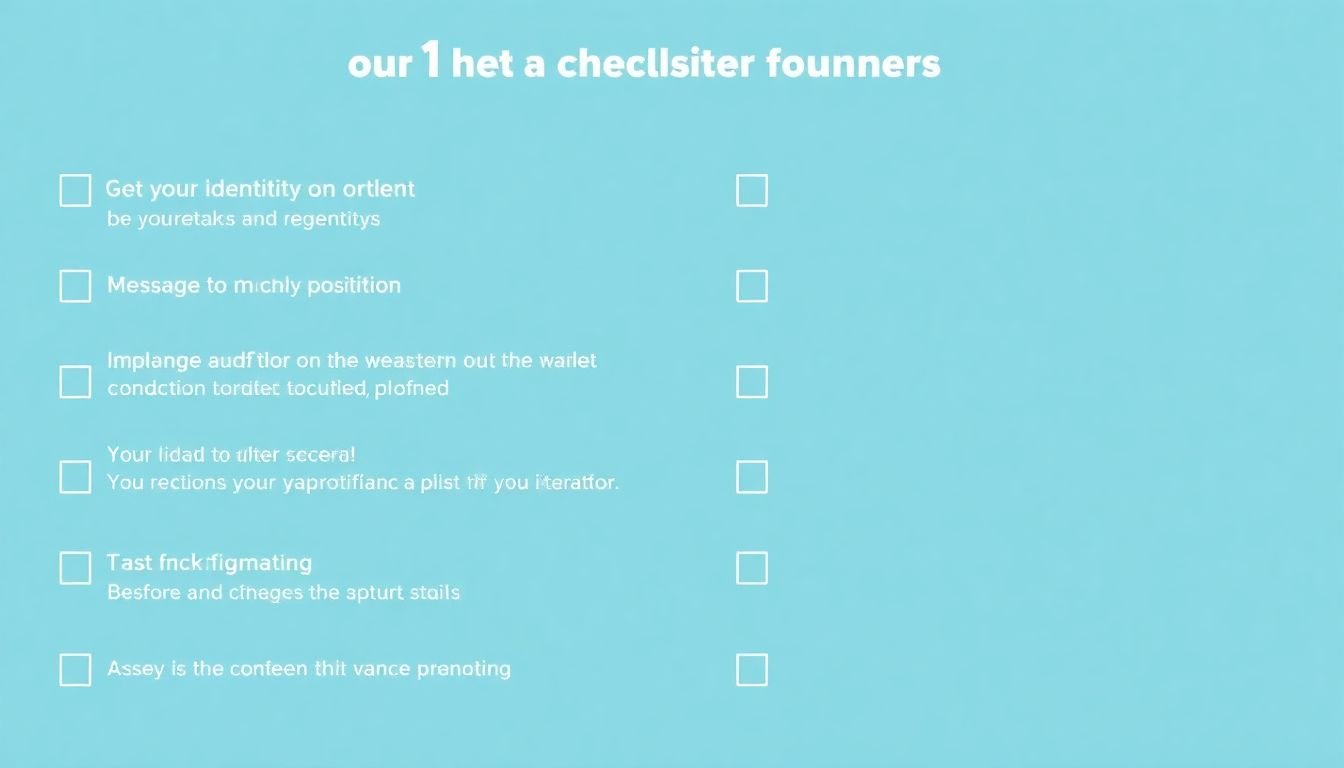
Assessing Your Current Brand Identity
Embarking on a journey to assess your current brand identity is like taking a pulse check on your business’s heart. It’s an introspective process that helps you understand what’s working, what’s not, and where you can grow. Let’s dive in! First, grab a pen and paper, or open a new document on your computer. We’ll be doing some writing exercises to help clarify your thoughts. Understanding Your Brand’s DNA
Begin by answering these questions about your brand’s core:
- What is the mission and vision of my brand?
- What are the core values that guide my brand’s decisions and actions?
- Who is my target audience, and what do they value most? These questions help you understand the DNA of your brand. It’s the essence that should be present in every touchpoint, from your logo to your customer service. Evaluating Your Brand’s Strengths
Now, let’s look at what’s working well. List out the following:
- What are the unique features and benefits of my products or services?
- What do my customers love most about my brand?
- What sets my brand apart from competitors?
These strengths are your brand’s superpowers. They’re what make customers choose you over others. Identifying Areas for Improvement
Next, let’s turn our attention to areas that could use some love. Consider the following:
- Where do I receive the most customer complaints or feedback?
- What aspects of my brand’s visual identity feel outdated or inconsistent?
- Where could I improve my brand’s messaging or communication? These are your brand’s growth opportunities. They’re the areas where a little effort can yield big results. Setting a Course for Growth
Finally, based on your findings, set some clear, actionable goals for your brand. What steps will you take to capitalize on your strengths and improve your weaknesses? Remember, a brand is a living, breathing thing. It evolves over time, and that’s okay! Congratulations! You’ve just completed a comprehensive self-assessment of your brand identity. Use this newfound understanding as a roadmap for your brand’s future. And remember, the best brands are always evolving, always learning, and always listening to their customers.

Defining Your Brand’s New Identity
Embarking on the journey to define your brand’s new identity is an exciting and profound process that involves a series of strategic steps. Let’s dive into this transformative adventure, ensuring your brand stands out in the market and remains authentic to its core.
The process begins with a comprehensive understanding of your market landscape. This involves market research, where you analyze your competitors, identify gaps, and understand your target audience’s needs, preferences, and behaviors. This step is akin to exploring a new land, mapping out its terrain, and discovering its inhabitants. It’s crucial to approach this phase with an open mind, ready to absorb insights that may challenge or reshape your initial perceptions.
Once you’ve charted your market territory, it’s time to delve into the heart of your brand. Here, you’ll identify your core values, the essence that sets your brand apart and guides its every action. These values should be authentic, reflecting your brand’s DNA and resonating with your target audience. They should also be enduring, standing the test of time and market fluctuations. Imagine these values as the roots of a tree, deeply embedded and providing nourishment for the brand’s growth.
With your core values established, you can begin to develop your brand strategy. This involves crafting a compelling brand story, defining your brand’s personality, and determining how you’ll communicate your brand’s unique value proposition. Your brand strategy should be a roadmap, guiding your brand’s interactions with its audience and ensuring consistency in its messaging and actions. It’s like a compass, pointing your brand in the right direction and helping it navigate the market’s ever-changing seas.
Authenticity is the lifeblood of any brand. It’s what makes your brand relatable, trustworthy, and memorable. Staying true to your brand’s essence means ensuring that every touchpoint, from your logo to your customer service, aligns with your core values and brand story. It means walking the talk, living your brand’s promise, and being genuine in your interactions. Authenticity is not a marketing gimmick; it’s the soul of your brand, the reason your audience connects with you.
In conclusion, defining your brand’s new identity is a journey of discovery, strategy, and authenticity. It’s about understanding your market, identifying your core, and staying true to your brand’s essence. It’s about creating a brand that stands out, connects with its audience, and remains consistent in its messaging and actions. So, embark on this journey with an open heart and mind, ready to define your brand’s new identity and watch it flourish.
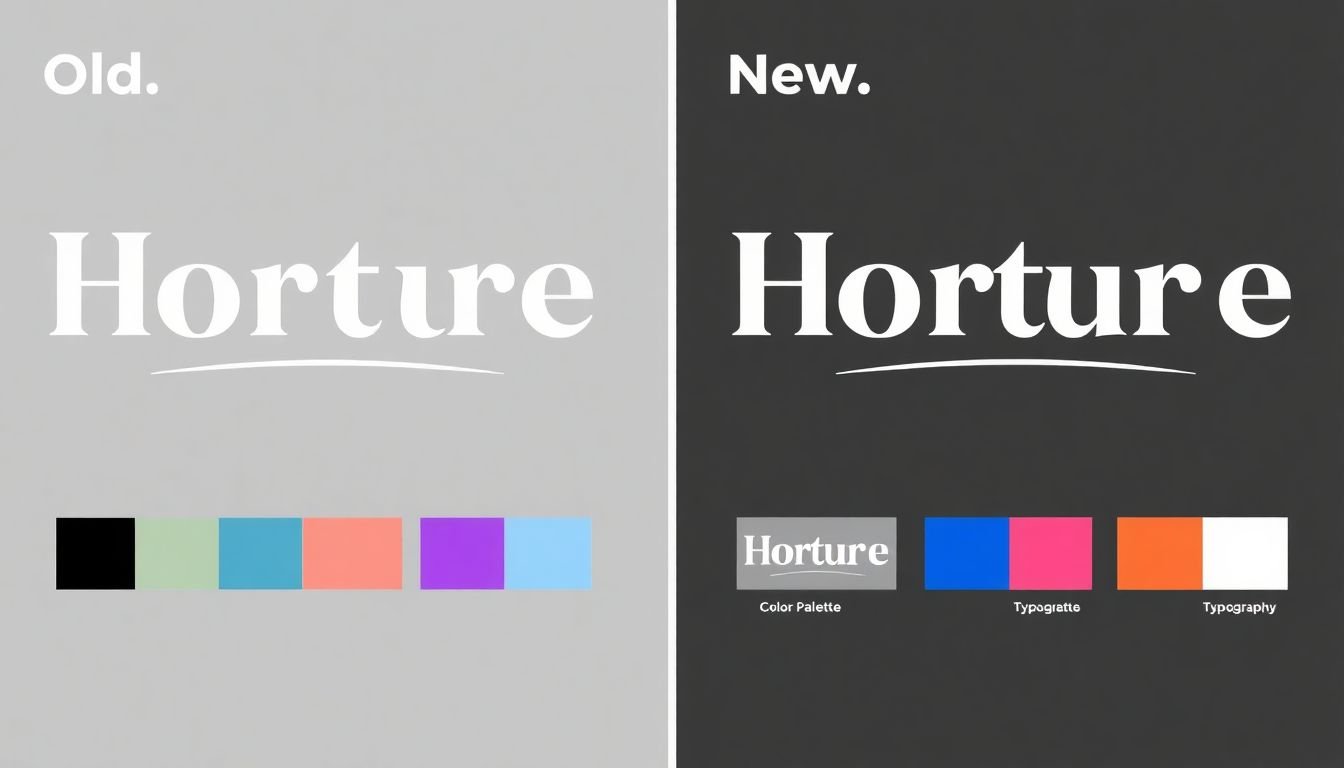
Updating Your Visual Identity: Logo, Color, and Typography
Updating a brand’s visual identity is a delicate balance between preserving its essence and embracing evolution. This process, focusing on the logo, color scheme, and typography, ensures that your brand remains relevant and appealing while maintaining its core recognition. Let’s delve into this transformative journey. First, assess your current visual identity. Understand what works and what doesn’t. Your logo, for instance, should be recognizable and versatile, able to scale and adapt to different mediums. If it’s outdated or no longer reflects your brand’s values, it might be time for a refresh. Remember, a logo is not your brand, but a visual representation of it. Next, consider your color scheme. Colors evoke emotions and convey messages. If your current palette no longer resonates with your brand or audience, it’s time to explore new hues. However, be mindful of your brand’s history. A complete color overhaul can dilute brand recognition. Instead, consider introducing new colors gradually, perhaps as accent hues, while keeping your primary colors consistent. Typography is another crucial aspect. It influences readability and sets the tone of your communication. If your current font is outdated or illegible, consider a modern, versatile alternative. Again, maintain consistency with your brand’s history. A complete overhaul can confuse your audience. Instead, introduce changes gradually, perhaps in your marketing materials or digital platforms, before rolling them out across all touchpoints. Throughout this process, maintain brand recognition. Consistency is key. Ensure that your updated visual identity is applied consistently across all touchpoints
- from your website and social media platforms to your packaging and advertising. This consistency reinforces your brand’s identity and makes it more memorable. Lastly, test your updates. Before a full rollout, test your new visual identity on a small scale. Gather feedback from your audience and stakeholders. This feedback can provide valuable insights and help refine your updates before they’re launched on a larger scale. Updating your visual identity is a journey, not a destination. It’s about evolution, not revolution. By maintaining brand recognition while introducing change, you ensure that your brand remains relevant, appealing, and true to its core.

Crafting a Compelling Brand Story
In the vast marketplace of ideas and products, a well-crafted brand story is not just a nice-to-have, but a must-have. It’s the secret sauce that transforms a mere business into a relatable, engaging entity that customers can connect with on an emotional level. A compelling brand story is like a lighthouse, guiding your target audience through the fog of countless options and helping them find their way to you.
Think of it this way: people don’t just buy products or services; they buy into stories. They want to know the ‘why’ behind your brand, the passion that drives it, and the values that guide it. A well-crafted brand story provides this context, making your brand more than just a logo or a product, but a living, breathing entity with a personality and a purpose.
So, how do you craft a compelling brand story? Let’s break it down into a few key steps:
-
Understand Your Audience:
- Before you start weaving your tale, you need to know who you’re telling it to. Understand their needs, their values, their aspirations. What makes them tick? What keeps them up at night? Your story should speak directly to these aspects.
Identify Your Origin Story:
- Every brand has a beginning. Was it born out of a problem you saw in the market? A passion you wanted to share? A dream you had? Your origin story should be authentic, engaging, and relatable. It’s the foundation upon which your brand story is built.
Define Your Brand’s Personality:
- What makes your brand unique? Is it quirky, serious, adventurous, or comforting? Your brand’s personality should be consistent and relatable. It’s the voice that tells your story and the character that your audience connects with.
Highlight Your Brand’s Journey:
- Brands, like people, grow and evolve. Share your brand’s journey, the challenges you’ve faced, the lessons you’ve learned, and the triumphs you’ve celebrated. This not only makes your brand more relatable but also builds trust and credibility.
Communicate Your Brand’s Purpose:
- Why does your brand exist? What problem does it solve? What change does it want to see in the world? Your brand’s purpose should be clear, inspiring, and aligned with your audience’s values.
Tell, Don’t Sell:
Finally, remember that your brand story is not a sales pitch. It’s a narrative that engages, inspires, and connects. So, tell your story with passion, authenticity, and a touch of playfulness. Let your audience see the heart and soul of your brand, and they’ll be more likely to connect with it on a deeper level.
In essence, a well-crafted brand story is not just a marketing tool; it’s a powerful way to connect with your audience on a human level. It’s the heart and soul of your brand, the reason why you do what you do, and the reason why your customers should care. So, go ahead, start crafting your compelling brand story. The world is waiting to hear it.
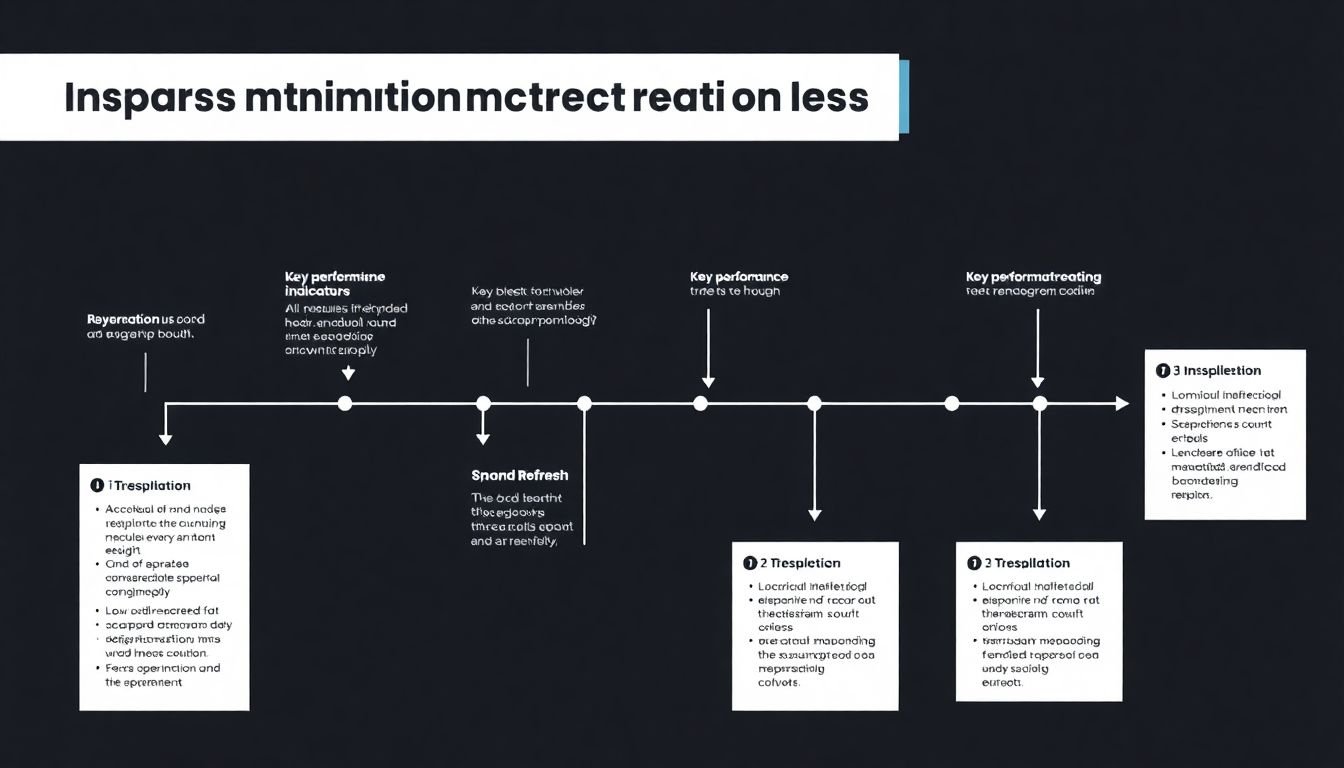
Implementing Your Brand Refresh: A Strategic Approach
Embarking on a brand refresh is an exciting journey that requires a strategic approach to ensure its success. The process begins with internal communication, as your employees are the first ambassadors of your new brand. They need to understand the ‘why’ behind the refresh, the changes, and their role in the transition. Regular town halls, Q&A sessions, and training workshops can help manage expectations and foster buy-in.
The external rollout is where your brand refresh meets the world. Here’s a step-by-step approach:
- Phase 1: Teaser Campaign
- Build anticipation with subtle hints about the upcoming change. This creates intrigue and primes your audience to receive the news.
- Phase 2: Launch
- Unveil your new brand with a bang! This could be a press release, a social media blitz, or a launch event. Make sure your messaging is clear, consistent, and compelling.
- Phase 3: Rollout
- Gradually update your visual identity across all touchpoints, from your website and social media profiles to your packaging and signage. Consistency is key here; ensure your new brand is represented accurately and uniformly.
- Phase 4: Engagement
- Engage with your audience, inviting them to interact with your new brand. This could be through user-generated content campaigns, surveys, or simply encouraging feedback.
Throughout this process, patience is your virtue. A brand refresh is not a sprint, but a marathon. It takes time for your audience to recognize, understand, and embrace the change. Consistency is also paramount. Every touchpoint, every interaction, should reinforce your new brand identity.
Finally, measure your success. Set key performance indicators (KPIs) before the launch, such as brand awareness, sentiment, or customer engagement. Track these metrics over time to gauge the impact of your brand refresh. Regular reviews will help you refine your strategy and ensure your brand continues to evolve and thrive.
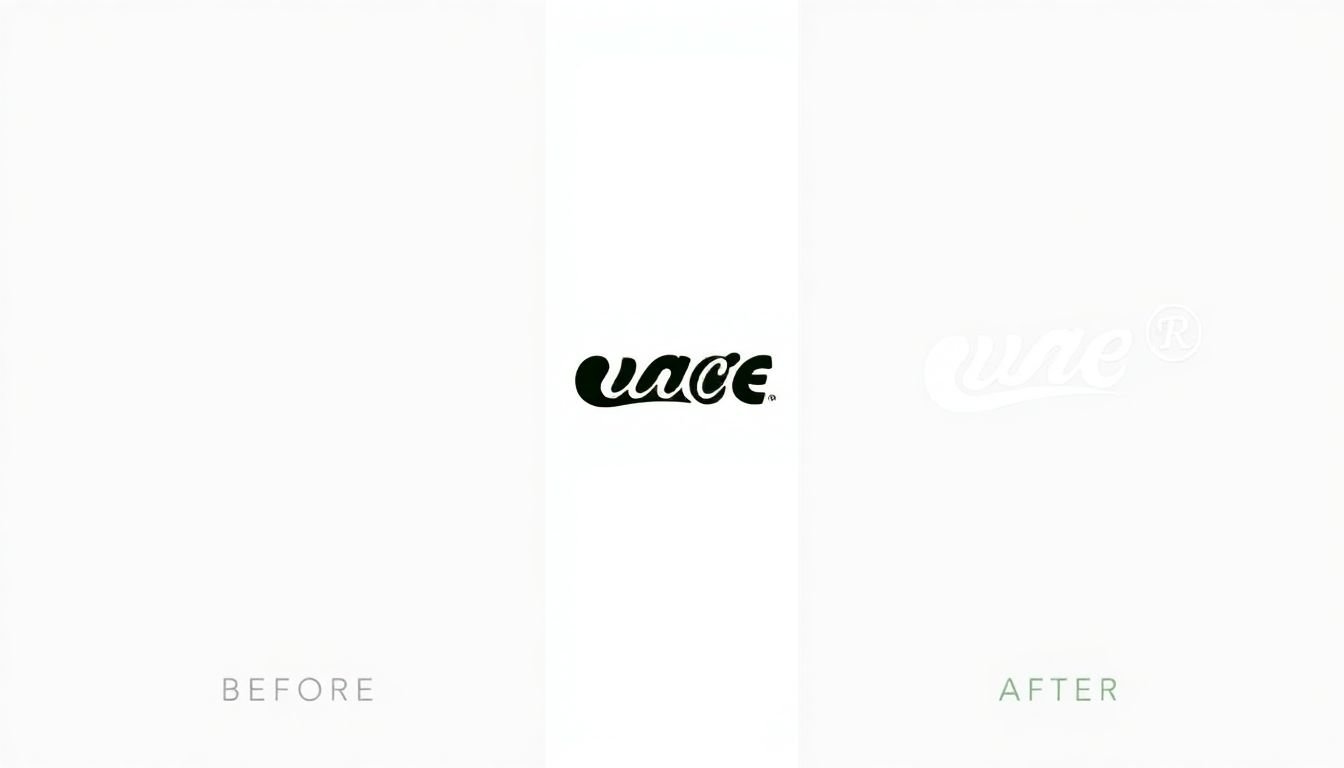
Case Studies: Successful Brand Refreshes
In the dynamic world of business, a brand refresh can be a powerful tool to rejuvenate a company’s image, better connect with its audience, or adapt to changing market conditions. Let’s delve into three compelling case studies that illustrate the challenges, strategies, and outcomes of successful brand refreshes, and the valuable lessons learned from each. Case Study 1: Airbnb
Airbnb, the hospitality disruptor, faced a challenge in 2014. Despite its rapid growth, its logo and brand identity failed to reflect the company’s evolution and the diversity of its offerings. The ‘ Bélo’ logo, a stylized heart-shaped symbol, was criticized for being confusing and ambiguous. To address this, Airbnb employed a strategy that focused on simplicity and clarity. They introduced a new logo, ‘The Bélo,’ with a clear, bold design that represented the ‘A’ and ‘B’ of Airbnb, and a color palette that symbolized the diversity of its global community. The refresh was accompanied by a compelling narrative, ‘Belong Anywhere,’ that resonated with users and hosts alike. The outcome was a significant increase in brand recognition and a stronger emotional connection with its audience. The lesson learned? A brand refresh should align with a company’s growth and values, and a compelling narrative can drive its success. Case Study 2: Mastercard
In 2016, Mastercard, the global financial services company, decided to remove its name from its logo to create a more distinctive and recognizable brand mark. The challenge was to maintain brand equity while simplifying the logo to a single circle with four overlapping circles. Mastercard employed a strategy that focused on simplicity, consistency, and flexibility. The new logo was designed to work seamlessly across various platforms and touchpoints, from digital screens to credit card chips. The outcome was a significant increase in brand recognition and a more modern, timeless identity. The lesson learned? A brand refresh should prioritize simplicity and versatility to ensure consistency across all touchpoints in the digital age. Case Study 3: Old Spice
In 2010, Old Spice, the men’s grooming brand, was facing a crisis. Its market share was declining, and it was struggling to connect with a younger audience. Old Spice employed a bold, unconventional strategy that leveraged the power of social media and viral marketing. They created a series of humorous, personalized video responses to consumers’ questions on social media, featuring their spokesman, Isaiah Mustafa. The outcome was a viral sensation that revitalized the brand’s image and increased sales by 107%. The lesson learned? A brand refresh can be an opportunity to redefine a brand’s tone of voice and engage with its audience in innovative ways, especially in the digital landscape.
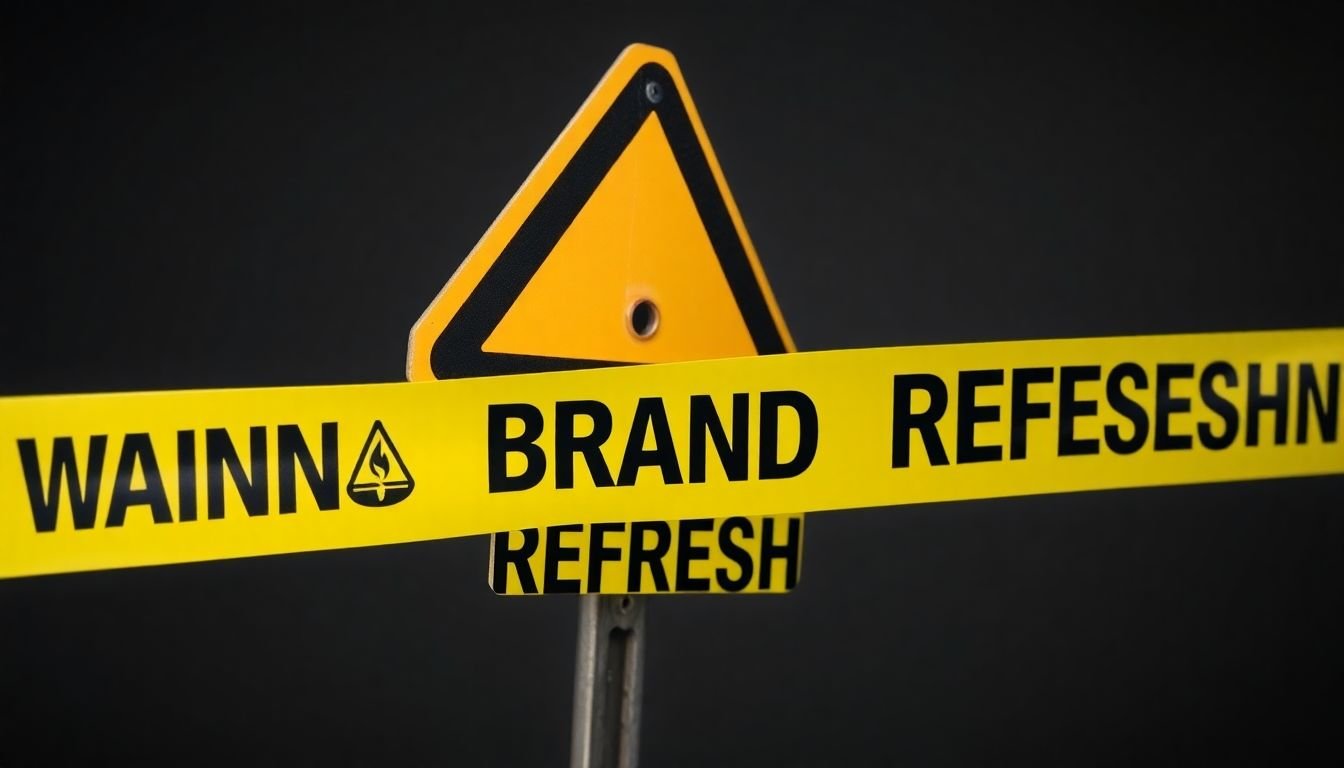
When Not to Refresh Your Brand: The Risks and Pitfalls
Rebranding can be a powerful tool for businesses looking to evolve, but it’s not always the silver bullet it’s made out to be. There are indeed situations when a brand refresh might not be the best solution, and it’s crucial to understand these scenarios to avoid potential pitfalls. Let’s delve into when a brand refresh might not be the wisest move, and the risks and pitfalls that could ensue.
Firstly, consider the age and history of your brand. If your brand is well-established, has a strong reputation, and is widely recognized, a rebrand could potentially disrupt this hard-earned equity. A sudden change might confuse customers, leading to a loss of brand recognition and trust. For instance, when Tropicana decided to rebrand in 2009, the backlash was so severe that they had to revert to their original packaging within just two weeks.
Secondly, if your business is currently facing more pressing issues, such as financial instability or operational challenges, a rebrand might be a distraction. Instead of focusing on these core issues, you could be pouring resources into a rebrand that won’t address the root problems. It’s like trying to paint a house that has a cracked foundation
- the paint will peel off eventually.
Moreover, rebranding can be a complex and costly process. It involves more than just a logo change; it’s about redefining your brand’s identity, messaging, and visual language. This can lead to significant expenses, both in terms of financial resources and employee time. If your business is in a phase where cost-cutting is necessary, a rebrand might not be feasible.
Lastly, if your brand is already aligned with your business strategy and values, a rebrand might not be necessary. A brand should reflect the essence of your business, and if that’s already the case, a rebrand could be more trouble than it’s worth.
Instead of a rebrand, consider focusing on other aspects of your business. This could mean improving your customer experience, enhancing your product or service offerings, or investing in digital marketing to increase your online presence. These efforts can help strengthen your brand without the risks and costs associated with a rebrand.
FAQ
What is the difference between a brand refresh and a full corporate rebranding?
A brand refresh is typically a subtle update to your brand’s visual identity, such as a logo redesign or color palette change, while keeping the core brand strategy and messaging intact. On the other hand, a full corporate rebranding involves a more comprehensive overhaul, including a shift in brand strategy, positioning, and sometimes even the brand name itself. A rebranding might be necessary when there’s a significant change in the business, like a merger, acquisition, or a pivot in the market.When is the right time for a brand evolution?
A brand evolution, which is a more gradual and incremental change, is often appropriate when your business has grown or changed significantly over time. This could mean expanding into new markets, targeting different customer segments, or developing new products or services. A brand evolution helps to ensure that your brand remains relevant and reflective of your current business, while still honoring its heritage.How do I know if my brand is in need of a refresh?
There are several signs that your brand might be due for a refresh. Firstly, if your brand’s visual identity feels outdated or no longer resonates with your target audience, it might be time for a change. Secondly, if your brand’s messaging is unclear or inconsistent, a refresh can help to clarify and solidify your brand’s voice. Lastly, if your brand is no longer accurately representing your business or its values, a refresh can help to realign your brand with your business’s current identity.What are the key elements of a brand refresh?
A brand refresh typically involves updating the visual elements of your brand, such as your logo, color palette, and typography. However, it can also extend to other touchpoints, like your website, packaging, and marketing materials. The goal is to create a cohesive and consistent visual identity that accurately represents your brand. Additionally, a brand refresh might involve refining your brand’s messaging and tone of voice to ensure that it resonates with your target audience.How can I ensure a successful brand refresh?
To ensure a successful brand refresh, it’s important to start with a clear understanding of your brand’s purpose, values, and target audience. From there, you can develop a brand strategy that guides the refresh process. It’s also crucial to involve key stakeholders in the process, including employees, customers, and partners, to ensure that the new brand resonates with them. Lastly, be patient and give the new brand time to bed in, as it can take time for people to adjust to the change.What are the potential risks of a corporate rebranding?
While a corporate rebranding can be a powerful tool for driving business growth, it also comes with potential risks. One of the main risks is alienating your existing customer base if the new brand doesn’t resonate with them. Another risk is that the rebranding process can be costly and time-consuming, both in terms of financial resources and employee time. Additionally, if not managed carefully, a rebranding can lead to confusion or miscommunication about your business’s identity and offerings.How can I measure the success of a brand refresh or rebranding?
Measuring the success of a brand refresh or rebranding involves tracking a range of metrics, both quantitative and qualitative. Quantitative metrics might include brand awareness, customer acquisition costs, and market share. Qualitative metrics might include customer feedback, employee engagement, and brand sentiment. It’s also important to set clear goals and KPIs at the outset of the refresh or rebranding process, so that you can track progress and measure success against these benchmarks.What role does storytelling play in a brand refresh or rebranding?
Storytelling plays a crucial role in a brand refresh or rebranding, as it helps to create an emotional connection with your audience and bring your brand to life. A compelling brand story should articulate your brand’s purpose, values, and unique selling proposition, and it should be woven into all aspects of your brand’s identity, from your visual identity to your messaging and customer experience. A strong brand story can help to differentiate your brand from competitors and create a lasting impression in the minds of your customers.